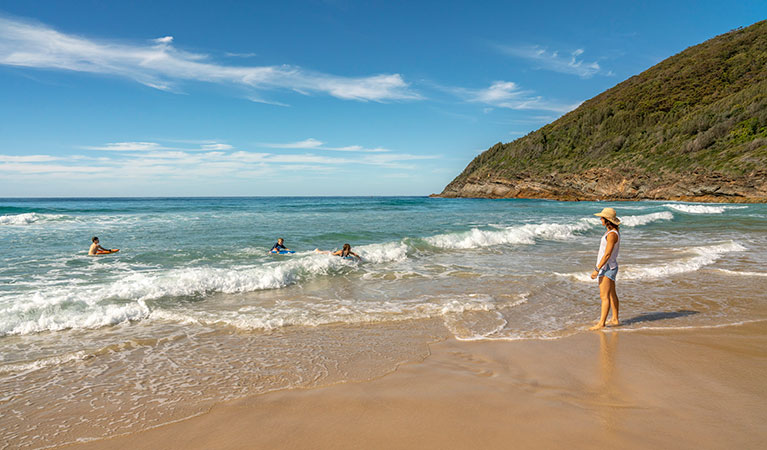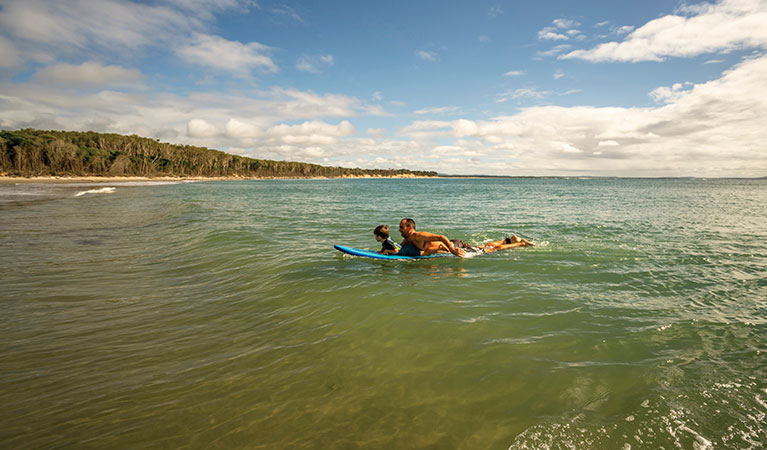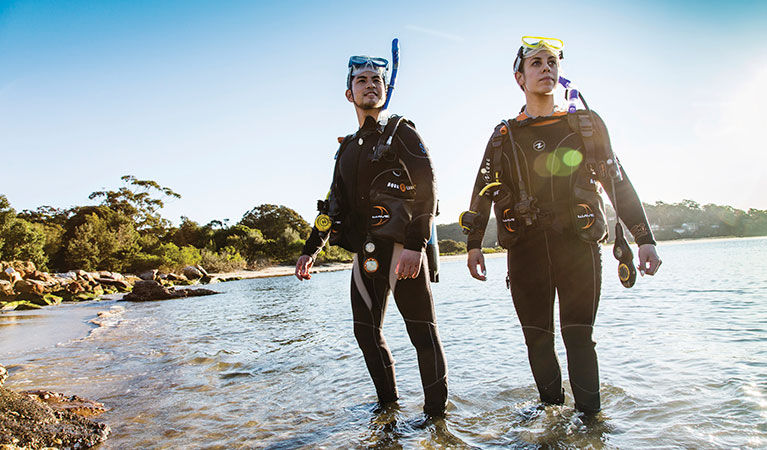Beach safety
If you're exploring coastal national parks, you'll discover many beautiful beaches. While enjoying our beaches, it's important to keep beach safety top of mind. These beach safety tips will help you stay safe in the water and on the sand.
Read more about Beach safety
Plan your trip
- Most beaches in NSW national parks are wild, remote and unpatrolled. Find out if there are lifeguards at your beach or find the nearest patrolled beach on the Beachsafe website.
- You may not have mobile phone reception if you need help.
- Check the weather forecast before you go.
- Check if there are any park alerts or closures before you go.
Tell somebody
Give your trip details to family and friends who are not travelling with you. Tell them when you expect to return and let them know when you have returned. For longer trips or remote areas, consider filling in a trip intention form and taking a satellite phone or personal locator beacon.
Beach safety tips
- The best way to avoid rip currents is to swim at a patrolled beach.
- If you are swimming at a patrolled beach, always swim between the red and yellow flags.
- If you need help, stay calm and attract attention by raising your arm.
- If help is not on hand, float with the rip current as some rips bring you back to shore. See more tips on the Beachsafe website.
- Check the beach hazard signs.
- Rips and currents can occur even on still days. Find out how to spot or escape rips and currents
- Be aware of diving into water. Even if you have already checked water conditions, they can change.
- Don't swim, surf, fish or go to isolated beaches alone.
- Only swim during daylight hours.
- Always supervise children in and around water.
- Don't swim under the influence of alcohol or drugs.
Marine wildlife
Look out for marine stingers. If you see bluebottles, avoid the water and leave octopuses alone (the blue-ringed octopus is venomous).
During swimming season, The Department of Primary Industries operates a shark meshing program at selected beaches in Sydney, the Illawarra and Central Coast. Some of these beaches are near NSW national parks. Find out more about the SharkSmart program.
What to wear
- Sunscreen
- Sunglasses
- A wide brimmed hat
- Sun protective clothing. Remember that ultraviolet radiation (UV) levels can be high even on cloudy days.
- Shoes—sand gets hot too.
- Wear the right protective gear for your activity. For example, wear fins and a leash for bodyboarding, a life jacket for kayaking, and a life jacket while rock fishing which is compulsory in many areas. Get more advice on water safety gear.
What to bring
- Insect repellent
- A beach umbrella or other sun shelter.
- Drinking water. Consider 2L per person. Take more than you think you’ll need.
- Food and snacks
- First aid kit
- Mobile phone. Download the Emergency Plus app
- Remember to take your rubbish with you when you leave.
Activities on the foreshore
There are lots of fun activities along the foreshore including rock hopping to the next beach or exploring rock platforms. These areas may contain risks for visitors and it’s important you consider these foreshore visiting tips and be aware of marine weather conditions.
Other activities near beaches
If you choose not to go into the water, there are plenty of other ways to enjoy our beaches – walking, picnicking, bird watching, or taking photographs. If you intend to fish, please visit the fishing and rock fishing safety page.


